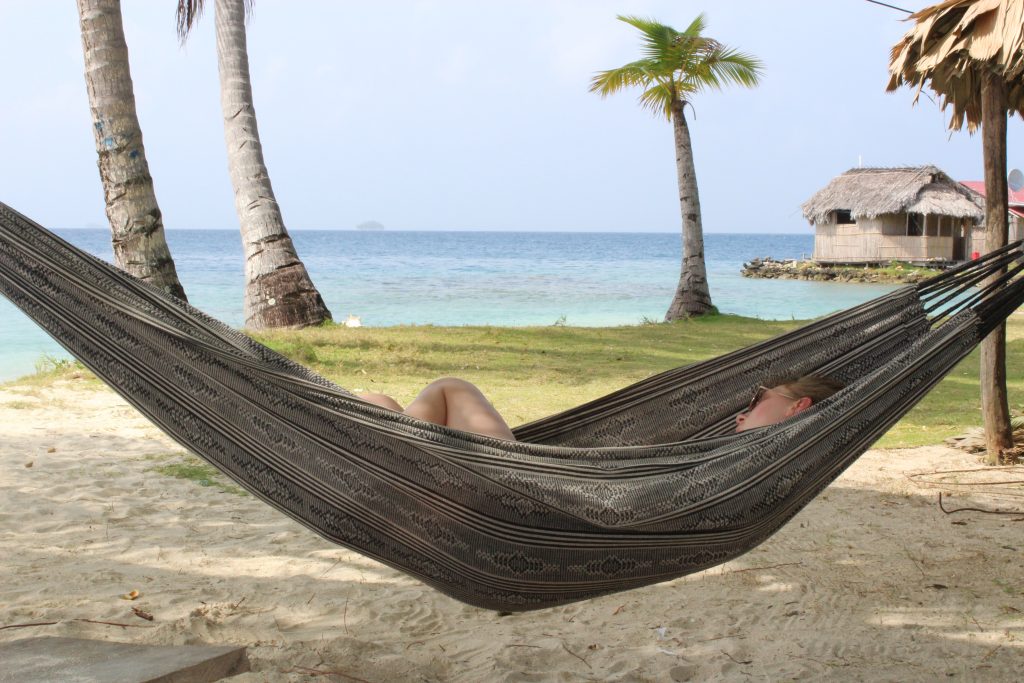
The first day after school got out I found myself driving north with my family toward Panama. Living outside Seattle, this has more to do with funky airline ticket pricing than a bad sense of direction. My wife had found flights out of Vancouver cheap enough to warrant the drive and the cost of parking the car for a couple of weeks. So our trip to Central America started with a short trip to Tim Hortons.
Panama was never on my list of must-see places. I didn’t know much about it, but I’d seen canals before, in Europe and upstate New York. And Manual Noriega’s prison cell was not of particularly great interest. But we wanted a relatively cheap and safe tropical place where our kids, fluent in Spanish, could take some responsibility for our daily travel logistics. My wife and I had been to Mexico, Guatemala, and Honduras before kids; South America seemed expensive and distant for four people and two weeks; and our youngest daughter (13 years old) was going to Costa Rica on a school trip in March. So when the relatively cheap flights to Panama came up, we were on our way.
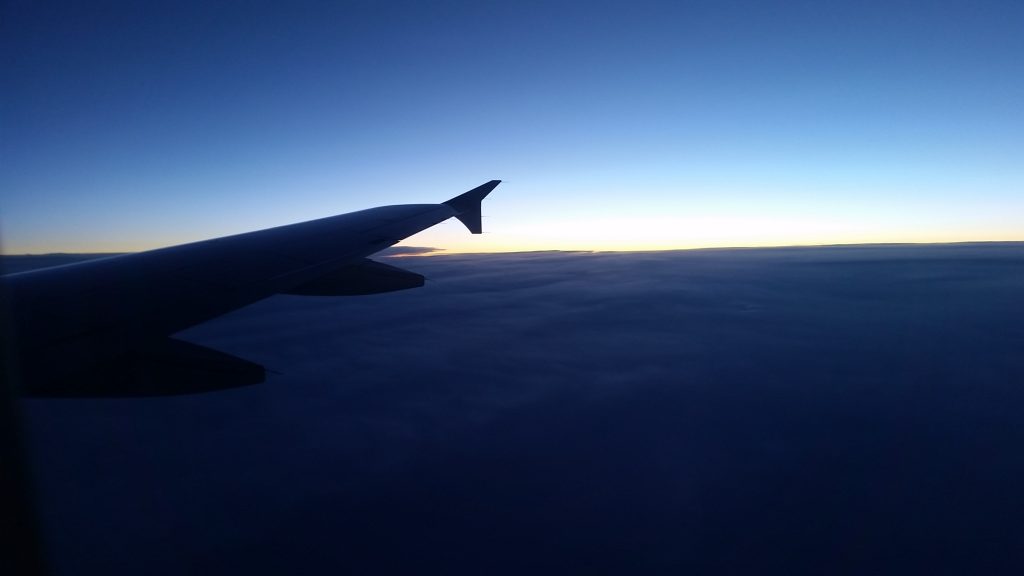
I know that’s not a ringing endorsement for a place, and it was compounded by the fact that my first internet inquiries were dominated by places seemingly owned by expat Americans (so much for Spanish immersion). But maybe it also helped to temper my expectations, setting the bar low. Anyway, the weather forecasts on the drive to Vancouver meant we’d be trading an imminent snowstorm in the Pacific Northwest for the 95-degree heat of Panama, which is a good place to start.
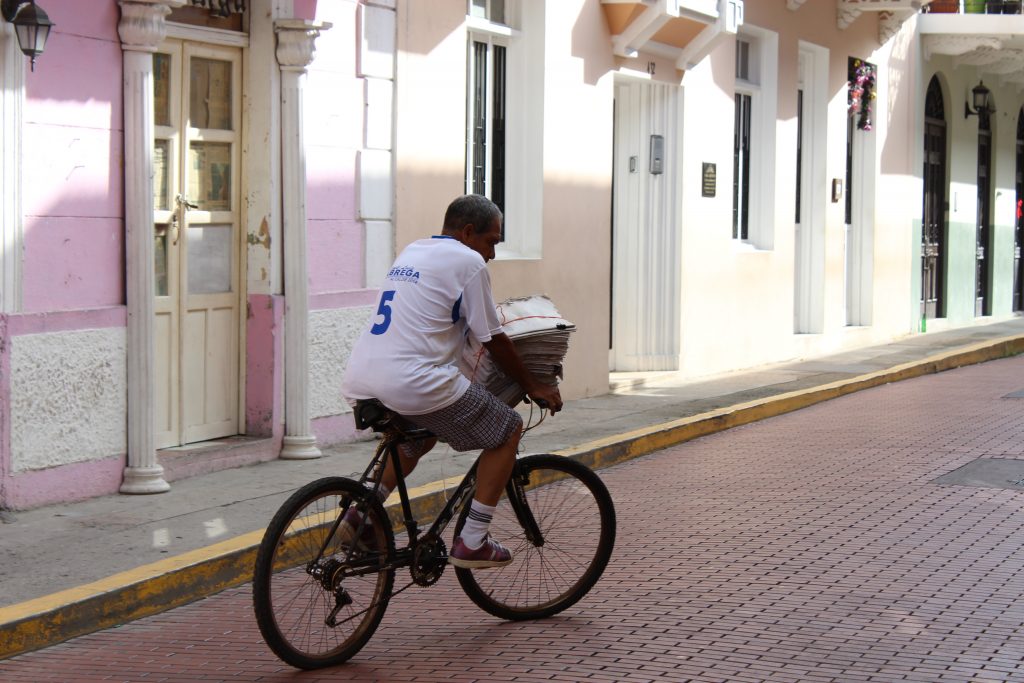
We arrived in Panama City at dawn and were met by a car I’d arranged through the Magnolia Inn in the Casco Viejo district. The “old quarter” is a UNESCO World Heritage Site and my first choice for a tourist place to stay in the city, with quaint historic streets and many restaurants and hotels/hostels. The room at the Magnolia wasn’t ready for us so early, so we left our backpacks and set off to find breakfast. We toured the district on foot before most of the businesses were open. Eventually, we discovered the fish market adjacent to Casco, found a stylish Panama hat to keep the sun off, and made it back to a great family room at the Magnolia for a nap. Just prior to sunset we rented a four-person bike to ride along the Amador Causeway, which overlooks the ships emerging from the Panama Canal.
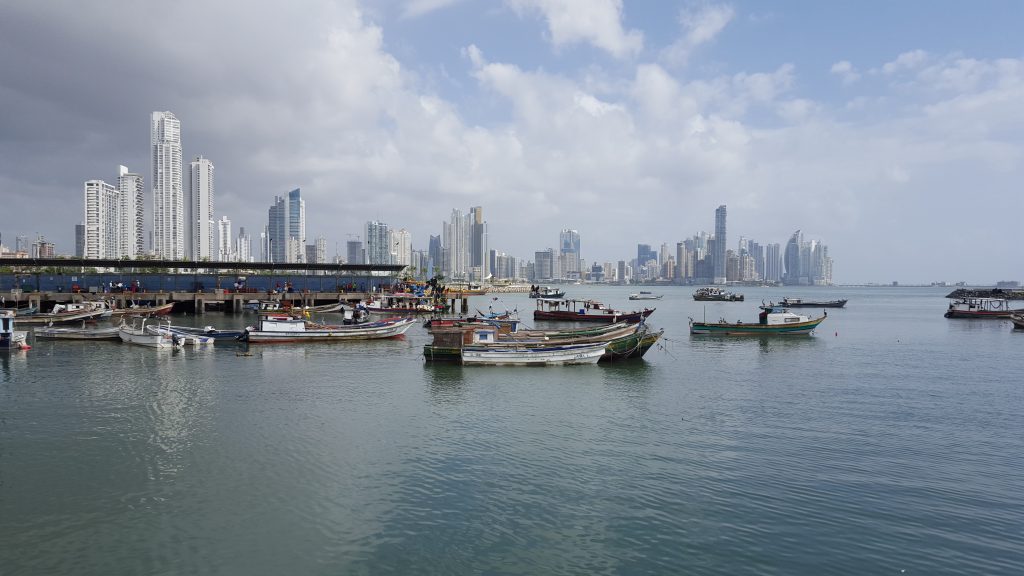
Panama City is a lively place with a metro area of almost 1.5 million people, but the first place we head the next day was, of course, the canal, an obligatory stop to see ships go up and down. After the canal and canal museum, which was a fine primer, we met a guide my wife had organized to take us upriver for tropical wildlife and giant ships up-close. We saw three species of monkey, including a mother and baby enticed onto the boat with a banana, and dozens of bird species. We also got some insider advice on where else to go in Panama, from a birding guide’s perspective (more on that later).
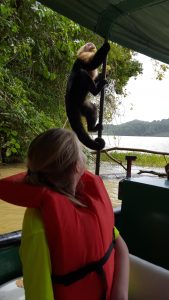
Well before dawn on our third day, we were picked up by a four-wheel-drive SUV for the bumpy drive northeast of Panama City, over the Guna Yala Hills to the Caribbean coast. On the way, we navigated a border checkpost, because the Guna Yala is an indigenous province governed by the native Kuna people. I saw a toucan in a tree by the side of the road, which helped to remind me of differences from home. At a coastal river, we traded the 4WD for a boat, and rode 40 minutes to the small island of Narasgandup Bipi and Cabanas Narasgandup. Half of us – those on the port side of the boat – were soaked to the skin from the waves and wind. We were all thankful that the boat crew put our packs in plastic bags. We landed to a warm welcome and moved into our two palm-thatched huts, about 10 feet off of the beach. Simple double bed, sand floor, table, and outside, a hammock strewn between two palm trees.
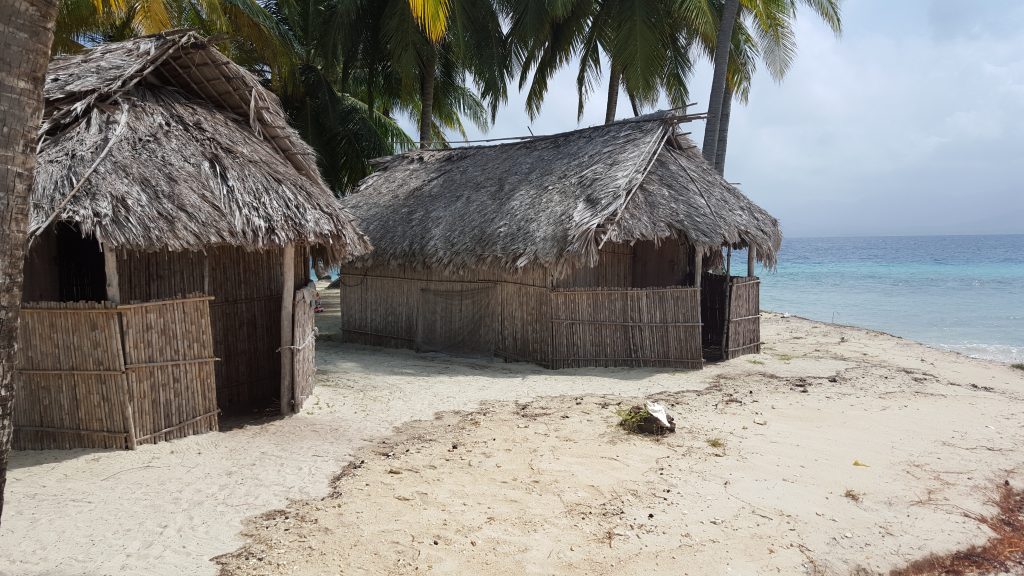
There was a couple staying in a hut up the beach plus another set of tourist cabanas on the other side of the island, but most of the island huts were inhabited by local Kuna families. The island was small – it took about 15 minutes to circumnavigate it by foot. The sky was azure blue, the water was crystal clear, and the sun was hot. Perfect!
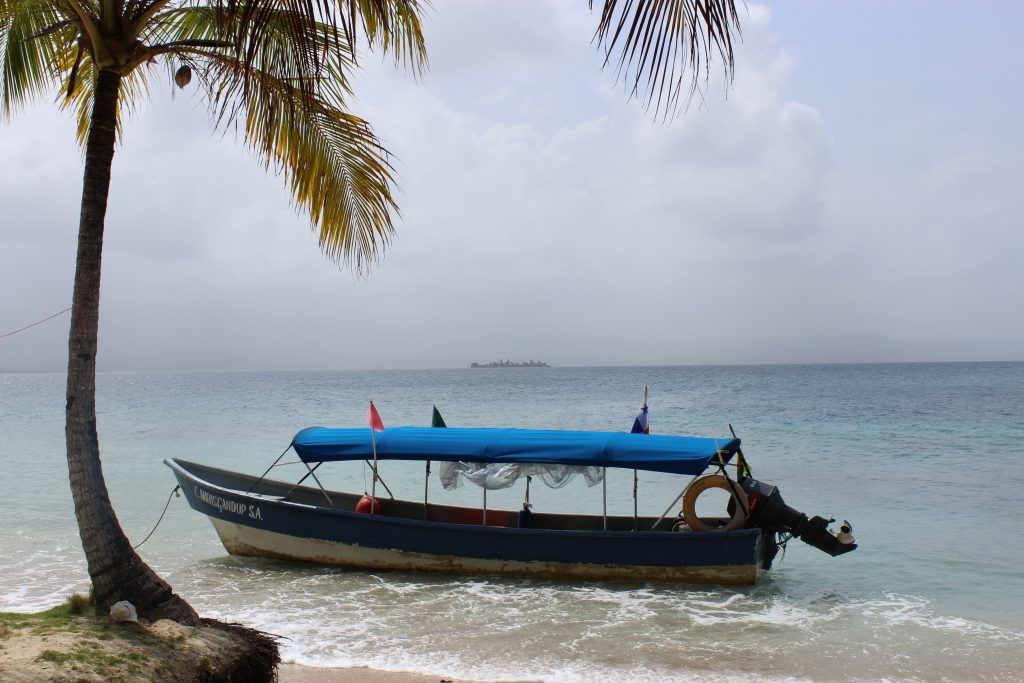
The island had electricity. I could hear a generator for a short time every morning. But, the fresh water had to be brought in from the mainland daily in 64-gallon plastic barrels. The Kuna men would hoist the water bucket by bucket up to an elevated tank that fed the showers, toilets, and kitchen. After watching them toil, I made sure our showers were very short. Potable water came daily too, in plastic bottles. Staying here was not cheap – it might be the most expensive sand-floored hut in the world – but I felt good about supporting the friendly and helpful Kuna family that runs these cabanas. The tariff included three meals a day, for which we were called to the communal dining area by a man blowing into a conk shell. Breakfast was eggs and tortillas. Lunch varied and usually included the fish of the day. Dinner was spiny lobster for each of the three nights we were there. It was awesome the first night, but a little overkill the other nights, especially after I read that they were being over-harvested to feed tourists like us.
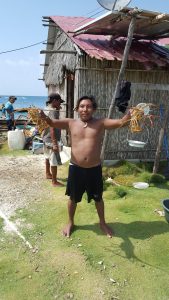
Everyday there was an excursion or two, in which we would load into the boat and go visit something cool. There was swimming in a calm blue water “pool” just inside a reef. There was snorkeling on a shallow shipwreck. And there was a visit to an indigenous village on a neighboring island that not only highlighted the local way of life, but also how that way of life is going to change, as most of the village was inundated with four inches of water. Sea-level rise is not an abstract concept!
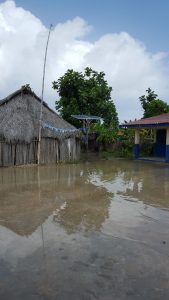
On our island, we spent a lot of time in hammocks in the shade. The local boys were out boogie boarding on pieces of plywood. We watched birds and butterflies come and go between islands, as well as fisherman in their sail-driven dugout canoes. When the air was still at night, it was almost too hot to sleep. But the Christmas full moon was worth getting up for anyway. Wonderfully, Santa was able to find us on our last morning before we retraced our steps to Panama City.
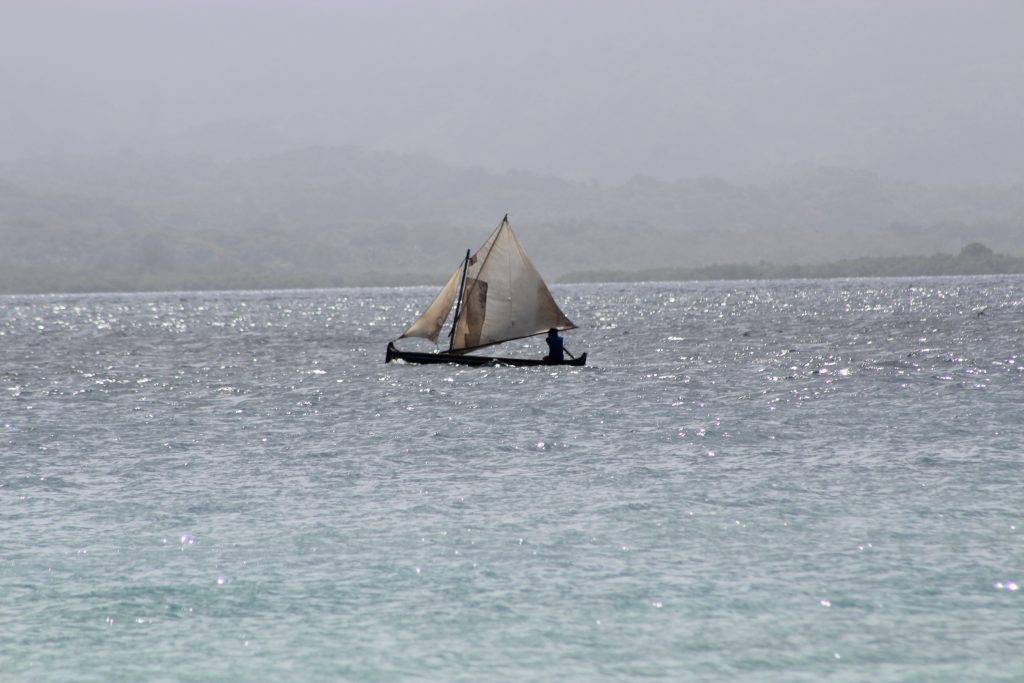
End of Part One. Part Two can be found here!


Can’t wait for part two.